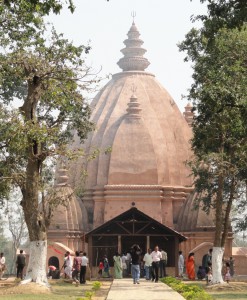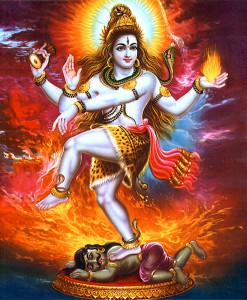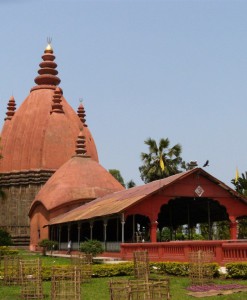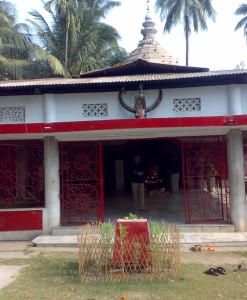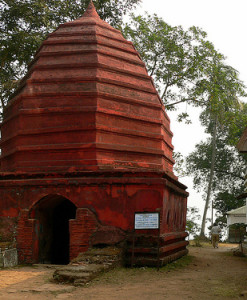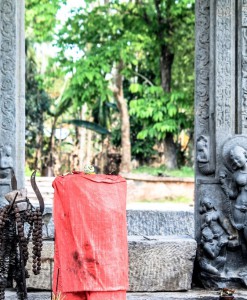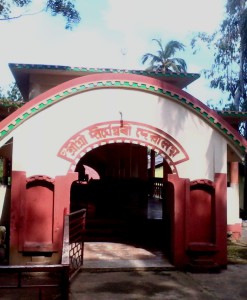No products in the cart.
Ugra Tara temple is located at Guwahati and is dedicated to Goddess Ugra Tara, an incarnation of Goddess Parvati. The deity is mostly associated with the Buddhist religion. The temple was built in AD 1725 by the erstwhile ruler of the region, King Siva Singh. A tank known as Jorepukhuri, built by the king, is situated to the east of the temple.
Ugra Tara Temple, Guwahati;
According to Hindu belief, an insulted Sati, the wife of Lord Shiva, sacrificed herself at a yagna (fire worship ritual) which was being performed by her father Dakshmaharaj. Angry with this incident, Lord Shiva started the tandava nritya (dance of destruction). In order to prevent destruction of all creation, Lord Vishnu used his Sudershan charka (wheel) to cut the body of Sati into several parts. Sati’s body was scattered all over what is presently the Indian subcontinent. There are 51 such holy spots where temples have been erected and they are called Peethas or the Shakti Peethas. Some of the Pithas are in Assam. Ugro Tara Temple is said to be the pitha where Sati’s navel fell.
As a tale of ancient Hindu scripture goes, as being replete with piousness, not a single soul out of all sinister was ready to be shifted to Hell from the sacred arena of Kamarupa despite being alleged for committing sins. The ruler of hell, Yama, lodged this complaint to lord Brahma. The complaint was sent to Lord Vishnu and eventually, to deity Shiva. While doing a fair judgement, lord Shiva commanded Goddess Ugra Tara to drive away all the inmates of Kamakhya.
In response to the command of the honorable deity, she sent her army to Kamakhya where Saint Vashistha was immersed into deep mediation for appeasing lord Shiva. They violated his mediation. Consequently, the saint cursed goddess Uma Tara as well as lord Shiva while her army was bearing the bane of becoming Mlechhas (menial) .Since then, Vedic Sadhana (of lord Shiva) has been abandoned to be done in Kamarupa while goddess UmaTara has been referred for Vamachara Sadhna
Around 1730 AD, Ahom King Siva Singha excavated two large tanks on the east of the current temple. Three years later he built a small but beautiful temple on the banks of these tanks. These tanks are now called Joepukhri (Jurpukhuri), Jur means ‘couple’ and ‘pukhuri’ means tank in Assamese.
Unlike other Hindu temples, Ugratara doesn’t have any idol or image of the deity. Inside the temple core there is a small pit filled with water which is considered as Goddess. The 1897 devastating earth quake damaged this temple too. But later it was repaired. There is also a Siva temple (Sivalaya) behind the main temple.
• Genesis of the shrine: It is widespread by the locales that this famous shrine is linked with the first consort of lord Shiva, especially from the navel of goddess Sati.
• Jorepukhuri Tank: The eastward part of this shrine has a water tank called Jorepukhuri which has been there dated back to the historic era of Ahom king Siva Singha. Earthquake has demolished its upper portion yet the tank is standing as it was.
• Dikkara Vasini: By virtue of Kalika Puran, it is regarded as a Shakti Peetha or Dikkara Vasini having its two forms namely:
i. Tikshna Kantha: This part of the Shakti Peetha is black and potbellied and popularly renowned as Ugra Tara or Eka Jata
ii. Lathika Kantha or Tamreshwari: The second part of the foregone Shakti Peetha is known as Lathika Kantha or Tamareshwari.
• Garbhagriha: The inner most part of this shrine is known as Garbhagriha where no idol is enshrined except a pit flooded with water. This sacred water embodies goddess Ugra Tara; hence, it is worshipped as a goddess there.
• Shivalaya: A beautiful spectacular view of lord Shiva’s shrine adds divine grace to the beauty of this shrine. It is located just next to the main shrines.
By Road: One can easily reach the Ugra Tara Temple by road from any part of Assam. One can also hire a taxi to reach the temple & also auto services are easily accessible.
By Rail: The Temple is well connected through nearest Guwahati railway station (1.4 km)
to major cities railway stations like Delhi, Agra, Mumbai, Chennai, Ajmer, Pali, Jaipur, Ahmedabad.
By Air: The Temple can be reached through nearest Guwahati Airport (22.8 Km) which is well connected with regular domestic flights to Delhi, Mumbai, Hyderabad, Bangalore, Chennai and other metropolitan cities.
The temple opens at 5:30 AM and closes at 8:00 PM. During this period rituals of sati are performed. Archana, Abhishekam and Arathi are the daily rituals performed in the temple.
The Ugratara Devalaya is situated in the heart of the Guwahati city, in the Uzan Bazar area. It attracts large number of pilgrims every year. The ‘Navaratri’ is the most celebrated holy festival in this temple every year. Traditionally, the temple practices animal sacrifices to please the goddess. Ugratara is considered as the demonic form of Sati. In this form she loves liquor, meat and utter devotion. That is why goats, cocks, ducks and even buffalos sacrificed in the temple. During Durga Puja and Kali Puja the temple campus sees maximum sacrifices.



